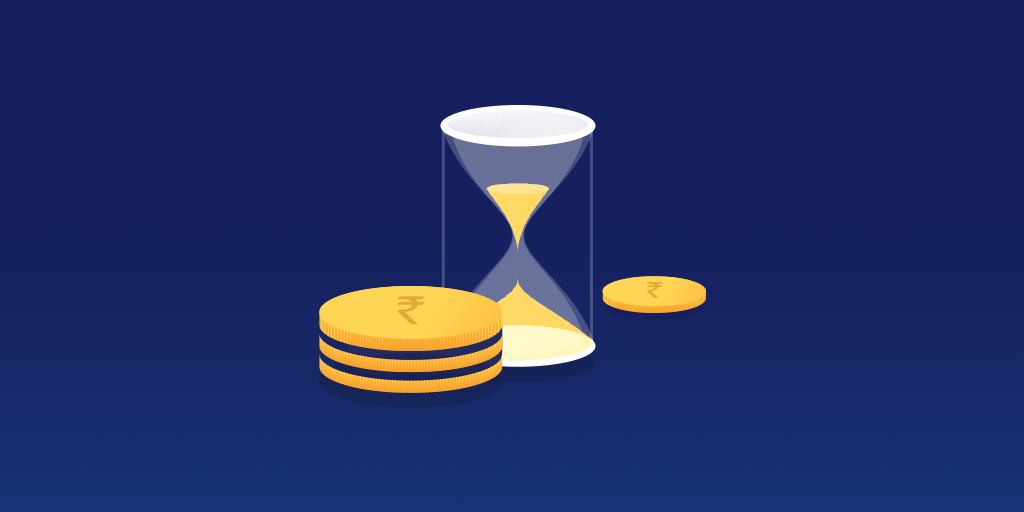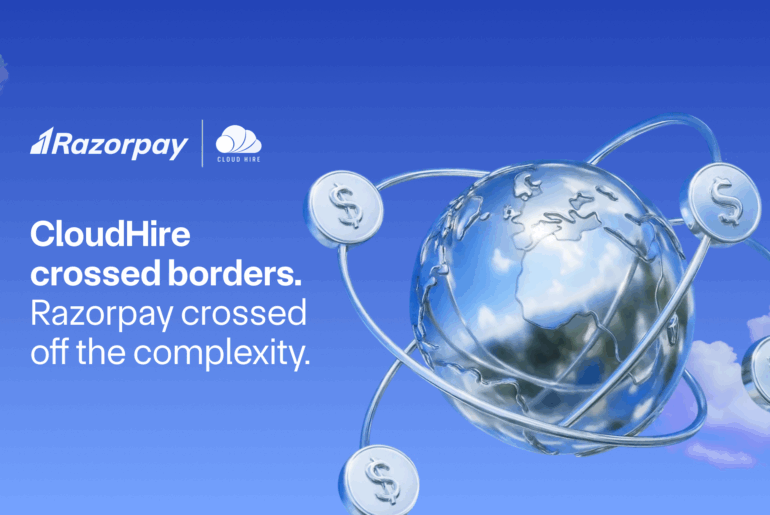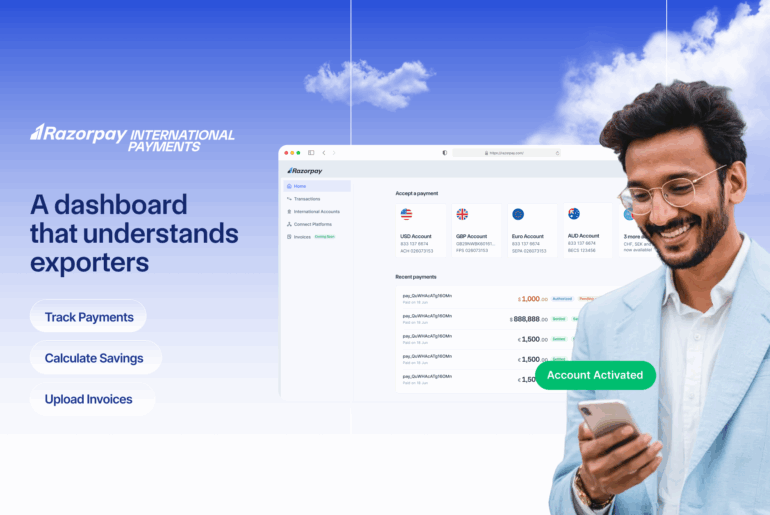Bharat QR, launched in 2017, is a digital payment solution that allows you to pay by simply scanning a QR code with your smartphone. It eliminates the need for card-swipe machines at stores, making transactions seamless and secure. You can use Bharat QR across various sectors, including retail, fuel stations, and restaurants.
This interoperable system, developed by NPCI and major card networks like Visa and MasterCard, lets you pay using cards or UPI. There are no extra charges for making payments, and the process is quick and easy. For merchants, it reduces costs, as there’s no need for hardware, and payments go directly into their bank accounts.
Table of Contents
What Is Bharat QR Code?
Bharat QR Code is a digital payment solution introduced by the Government of India to accelerate the adoption of cashless transactions. It allows you to make payments by scanning a QR code using your smartphone, eliminating the need for physical cash or card machines. With Bharat QR, payments become quicker and more accessible.
Bharat QR was developed as part of the government’s broader efforts to push digital payment initiatives, which also include UPI, BHIM, and Aadhaar Pay.
How Does Bharat QR Code Work?
1. Merchant Setup
Merchants generate a Bharat QR code through their bank or payment service provider. They then display this QR code at their store, either digitally or as a printed version for customers to scan.
2. Customer Scanning
To make a payment, customers open their UPI-enabled app, select the scan option, and point their phone camera at the merchant’s Bharat QR code. This instantly captures the payment details.
3. Payment Authorisation
Once the QR code is scanned, the customer enters the payment amount (if needed) and their UPI PIN to authorise the transaction. This ensures the payment is securely processed.
4. Funds Transfer
Upon authorisation, the funds are instantly transferred from the customer’s bank account to the merchant’s account. This transaction is facilitated through UPI’s secure network.
5. Confirmation
Both the customer and merchant receive immediate confirmation of the payment via their respective apps, ensuring the transaction is successfully completed.
Who Can Apply for Bharat QR Code?
1. Merchants and Businesses
Retailers, small businesses, and service providers who want to accept digital payments can apply for a Bharat QR Code. This includes brick-and-mortar stores as well as e-commerce sellers who prefer a QR-based payment option. Bharat QR is beneficial for merchants who wish to offer their customers a cashless payment experience without the need for expensive PoS machines.
2. Freelancers and Self-employed Individuals
Freelancers, consultants, tutors, and other self-employed professionals can also apply for the Bharat QR Code. By using Bharat QR, they can accept payments directly into their bank accounts, making it easier to manage their earnings. It’s a flexible solution for professionals who operate without a physical storefront but still need to offer digital payment options to clients.
3. Requirements
To apply for the Bharat QR Code, follow these steps:
-
Ensure you have a current account with a participating bank.
-
Link your bank account to the BHIM app or another payment service provider that supports Bharat QR.
-
Generate your Bharat QR Code using the app, and ensure it is linked to your account.
-
Display the QR code prominently at your business location or share it with customers online for easy access.
How Can You Generate Your Bharat QR Code?
Through Your Bank or Payment Service Provider
-
Log in to your bank’s portal or mobile app that supports Bharat QR.
-
Navigate to the section for generating QR codes, usually under payment or merchant services.
-
Submit the required documents, such as your current account details and identification proof of identification.
-
Generate your Bharat QR Code and download it for use at your business location or share it with customers.
-
Display the code prominently to ensure easy access for customers.
Using Mobile Payment Apps/ UPI Apps
-
Download and install a mobile payment app that supports Bharat QR.
-
Link your bank account to the app following the on-screen instructions.
-
Find the option to generate a Bharat QR Code under the payment settings or merchant section.
-
Generate the code and save it to your device or print it out.
-
Display the code at your store or share it digitally for online transactions.
Through a Payment Gateway
-
Contact your payment gateway provider and inquire about Bharat QR Code generation.
-
Follow the instructions provided by the gateway to link your bank account and generate your QR code.
-
Integrate the QR code into your website or e-commerce platform.
-
Ensure the code is active and ready for customer payments.
Bharat QR Code Charges
1. Bank Charges
Banks may impose fees for setting up or using Bharat QR services. The Merchant Discount Rate (MDR) is a primary charge which varies based on the type of transaction. For debit card transactions under ₹2000, the MDR is typically 0.75%, while it increases to 1% for transactions above that amount. Credit card transactions have a higher MDR, generally ranging from 2% to 4%, depending on the bank.
2. Payment Gateway Fees
Merchants may incur additional payment gateway fees when using Bharat QR. These fees are not universally standardised and can vary by service provider. However, many banks and payment gateways do not charge extra fees specifically for Bharat QR transactions, making it a cost-effective option for merchants.
3. Hardware Costs
Merchants may need to invest in hardware to facilitate Bharat QR transactions, such as QR code scanners or payment terminals. However, unlike traditional POS systems, Bharat QR primarily utilises printed QR codes, which reduces the need for expensive hardware. Merchants can simply display a QR code sticker at their locations, minimising upfront costs.
4. Transaction Fees
Transaction fees for Bharat QR payments can vary. While there are no direct charges to customers for making payments through Bharat QR, merchants are responsible for the MDR associated with each transaction. This fee structure means that while customers can enjoy a fee-free payment experience, merchants must account for these costs in their pricing strategies.
How to Use a Bharat QR Code?
Using the Bharat QR Code is simple and convenient, whether you’re making a payment at a physical store or paying bills online. Here’s a guide on how to use the Bharat QR Code effectively.
Payment at a Store
-
Ensure you have a smartphone with an active data connection and a mobile payment app that supports Bharat QR (such as BHIM, Paytm, or Google Pay).
-
Open the mobile payment app and select the option to pay using a QR code.
-
Scan the Bharat QR Code displayed by the merchant using your smartphone’s camera.
-
Enter the payment amount if prompted, or verify the amount if it’s pre-filled.
-
Authorise the payment by entering your PIN or biometric authentication, depending on your app’s security settings.
-
Receive confirmation of the payment on your phone, and ensure the merchant also confirms receipt of the payment.
Paying a Bill Online
-
Open your mobile payment app that supports Bharat QR or use the UPI section of your banking app.
-
Navigate to the bill payment section or select the option to pay via QR code.
-
Scan the Bharat QR Code provided by the billing service or displayed on your bill.
-
Verify the bill details and the payment amount if required.
-
Complete the payment by authorising the transaction with your PIN or biometric verification.
-
Save or screenshot the payment confirmation for your records and wait for the confirmation from the billing service.
What Are the Benefits of the Bharat QR Code?
1. No Need for Expensive PoS Machines
With Bharat QR, merchants don’t need to invest in costly PoS machines. This significantly lowers operational costs as there are no maintenance fees or transaction charges associated with PoS terminals.
2. Quick Payment Processing via IMPS
Payments made through Bharat QR are processed instantly via IMPS, ensuring that funds are credited to the merchant’s account without delay. This quick turnaround enhances cash flow and reduces waiting times.
3. Enhanced Security
Bharat QR transactions are more secure because your card details are never shared with the merchant. This eliminates the risk of card skimming, providing a safer payment experience for customers.
4. Open Payment Interface
Bharat QR is interoperable, meaning it works across multiple banks and supports various card types. Unlike systems like mVisa or MasterPass, which are limited to specific cardholders, Bharat QR offers broad compatibility for all users.
5. UPI Integration
Bharat QR is integrated with UPI and works seamlessly with apps like BHIM, offering flexible payment options. You can choose to pay using UPI, debit/credit cards, or even prepaid payment instruments like digital wallets, making it a versatile solution.
6. Bank Participation
Bharat QR is supported by a wide range of banks across India. Here’s the list of banks live on Bharat QR, from both issuing and acquiring ends:
-
Axis Bank
-
Bandhan Bank
-
Bank of Baroda
-
Bank of India
-
Canara Bank
-
Central Bank of India
-
City Union Bank
-
CSB Bank
-
Equitas Small Finance Bank
-
Federal Bank
-
Gujarat State Co-op Bank
-
HDFC Bank
-
ICICI Bank
-
IDBI Bank
-
IDFC Bank
-
IndusInd Bank
-
Karnataka Bank
-
Karur Vysya Bank
-
Lakshmi Vilas Bank
-
Punjab National Bank
-
RBL Bank
-
Saraswat Bank
-
Sodexo PPI
-
South Indian Bank
-
State Bank of India
-
Thane Janata Sahakari Bank
-
UCO Bank
-
Union Bank of India
-
YES Bank
-
Vijaya Bank
-
Corporation Bank
-
DCB Bank
-
Kotak Mahindra Bank
-
Indian Bank
-
United Bank of India
-
Andhra Bank
-
Dena Bank
-
Allahabad Bank
In addition to these banks, some other banks are expected to join the Bharat QR network, making transactions easy and convenient for both customers and merchants.
7. Dynamic Payment Mode
Merchants can create a QR code for each transaction, streamlining the payment process and boosting security. This dynamic system helps minimise errors and reduce the risk of fraud.
8. Lower Transaction Costs
Without the need for PoS machines, transaction costs are significantly reduced for both merchants and customers. This cost-effectiveness makes Bharat QR an ideal solution for small businesses looking to save on payment infrastructure.
9. Collaborative Effort
Bharat QR was created through the joint efforts of leading payment networks like Visa, Mastercard, and NPCI, ensuring that it works seamlessly across various platforms and payment systems.
10. Robust Security Benefits
Since payment details aren’t shared with merchants, Bharat QR effectively eliminates the risks of fraud like card skimming, making it one of the most secure digital payment methods available today.
Frequently Asked Questions (FAQs)
1. What happens if a wrong transaction is made?
If a wrong transaction is made using the Bharat QR Code, you should immediately contact your bank or payment service provider to report the issue. Most banks have a dispute resolution process that allows you to file a claim for erroneous transactions.
2. Which payment methods are supported by Bharat QR Code?
Bharat QR Code supports debit and credit cards, as well as UPI payments. You can use it with mobile payment apps like BHIM, Paytm, Google Pay, and PhonePe.
3. Is Bharat QR safe?
Yes, Bharat QR is designed with security in mind. It uses encryption to protect transaction data and integrates with secure payment systems like UPI. However, to ensure maximum security, always use updated apps, verify the QR code before making payments, and keep your payment details confidential.
4. How can I get my Bharat QR Code?
To get your Bharat QR Code, you can either contact your bank or use mobile payment apps that support Bharat QR. Log in to your bank’s portal or app or the payment app, and follow the instructions to generate your QR code. You’ll need an active bank account and may need to provide certain documents.
5. Is Bharat QR different from UPI?
Bharat QR and UPI are related but serve different purposes. Bharat QR is a standard for QR code-based payments that can be used with various payment methods, including UPI. UPI (Unified Payments Interface) is a payment system that facilitates instant bank-to-bank transfers using a mobile app.
6. Which banks and payment apps support Bharat QR Code payments?
Most major banks and payment apps in India support Bharat QR Code payments. This includes banks like SBI, HDFC, ICICI, and Axis Bank, as well as payment apps such as BHIM, Paytm, Google Pay, and PhonePe.
7. What type of transactions can I use the Bharat QR code for?
Bharat QR Code can be used for various types of transactions, including retail payments, service payments, and bill payments. It is suitable for in-store purchases, online bill settlements, and peer-to-peer transfers, making it a versatile tool for both merchants and individuals.
8 Can Bharat QR codes be used for both online and offline transactions?
Yes, Bharat QR codes can be used for both online and offline transactions. In-store payments are typically made by scanning the QR code displayed at the merchant’s location, while online transactions can be done by scanning a QR code provided by the billing service.


